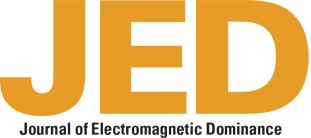JED: What are some of the major EMS Operations (EMSO) trends that you are seeing and how are they driving the types of equipment that your company is offering?
Rofheart: With the proliferation of A2AD systems, jammers and counter battery radars, small, autonomous, unmanned systems are needed to penetrate, observe and affect targets; and all aircraft need real-time EMS situational awareness.
To address this, ASI is focusing on delivering products for RF driven mission autonomy emitter/threat/target detection, DF and geolocation; Small UAS / Launched Effects (LE) air platforms with integrated small RF sensors for deep, stand-in sensing; High Altitude Platforms (HAPS); and ultrawideband EMSO on aircraft not specialized for COMINT/SIGINT/ELINT.
JED: As your company began to focus on the EMSO market, what types of software and hardware did you develop that enabled you to scale COTS your equipment into solutions that simulate large, complex EMS operating environments?
Rofheart: For the EMSO market to innovate at a pace necessary to stay ahead of adversaries, deployment of open standards that are interoperable with commercial technologies is essential. A Modular Open Systems Approach (MOSA) can accomplish this. This belief is at the core of ASI’s product philosophy.
JED: What are some of the product areas where your company is focusing on new offerings for the EMSO and EW markets?
Rofheart: The EMSO and EW markets have gaps in deep, stand-in, and long-range, stand-off, sensing from small, affordable, survivable platforms that can geolocate complex, agile, very fast frequency hopping, RF waveforms from single platforms. Traditional approaches need large antenna arrays or multiple, networked small platforms looking at the same target at the same time. This is an inefficient deployment of resources – the platforms either need to be large or operate in uncontested spectrum. ASI’s application of ultrawideband DF and geolocation technology delivers solutions that enable small, single/standalone unmanned autonomous platforms and non-SIGINT specialized aircraft to accomplish the same objectives, at a much lower operational cost and no, or low, human cost.
JED: What has your company done to improve the quality and speed of your manufacturing process?
Rofheart: ASI’s philosophy is to integrate and leverage open standards and COTS products to deploy a scalable and innovative product portfolio. Through our use of COTS modules, modular assemblies, and semiconductor products coupled with our manufacturing partnerships, we can rapidly customize our standard products for specific platforms, unique operating conditions, and customer-requested software integrations. This approach allows our customers to evolve as quickly as adversaries using commercial technologies.
JED: Over the past few years, how has your company learned from its customers and used this information to either introduce new services or refine some of the existing services it offers to the market?
Rofheart: With the accelerated deployment of A2AD systems, jammers and counter battery radar, we think small, autonomous, unmanned systems are needed to penetrate, observe, and affect targets – and all aircraft need EMS awareness.
ASI’s application of ultrawideband delivers solutions that enable small, single/standalone unmanned autonomous platforms and non-SIGINT specialized aircraft to accomplish the same objectives, at a much lower operational cost and no, or low, human cost.
Our portfolio of small form-factor, ultrawideband, RF direction finding, and geolocation systems enable EMSO on non-specialized aircraft; deep, stand-in sensing from small UAS, Launched Effects (LE) and UAS munitions; long range, standoff sensing, from High Altitude Platforms (HAPS); and, RF driven Mission Autonomy.
Coupled with our philosophy to integrate and leverage open standards and COTS products we can evolve as quickly as adversaries using commercial technologies.
JED: How does the company attract the engineering talent it needs in a job market where it must compete with commercial technology companies, as well as larger defense systems developers?
Rofheart: Today’s engineering talent thrives on having a purpose and making meaningful contributions for a better, safer world – not spending their talents on gaming for teens. Alternatively, large defense contractors are driven by build-to-order and engineering services business. We offer product innovation and the opportunity to conceive and refine new applications in concert with end customers. Our success in product focused solutions for complex EMSO challenges, and rapid innovation sets us apart, enabling us to attract and retain top-tier technologists.
JED: What technologies will you be showcasing in your booth at AOC 2023?
Rofheart: Applied Signals Intelligence will be showcasing its small form-factor, ultrawideband, RF direction finding and geolocation systems.






